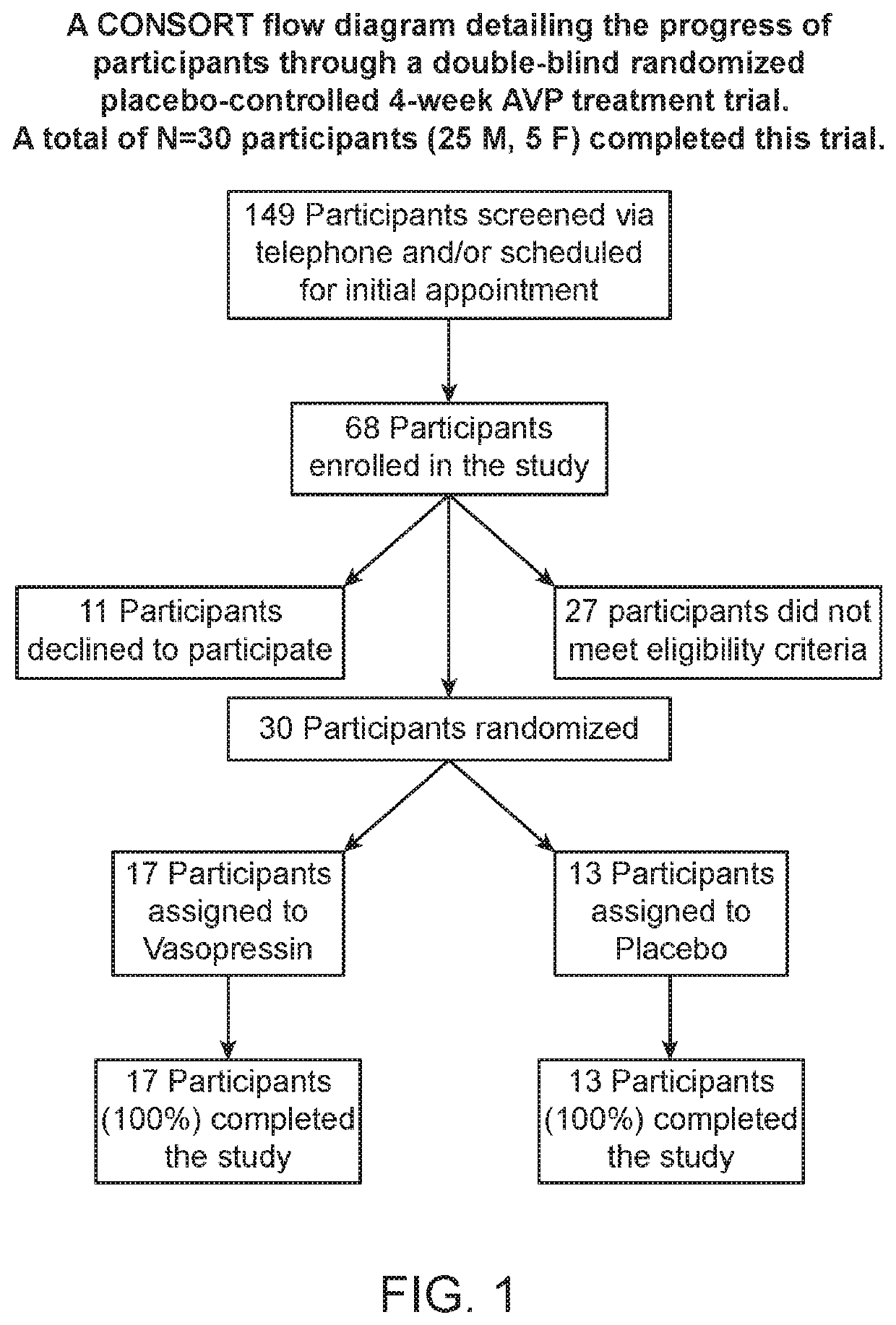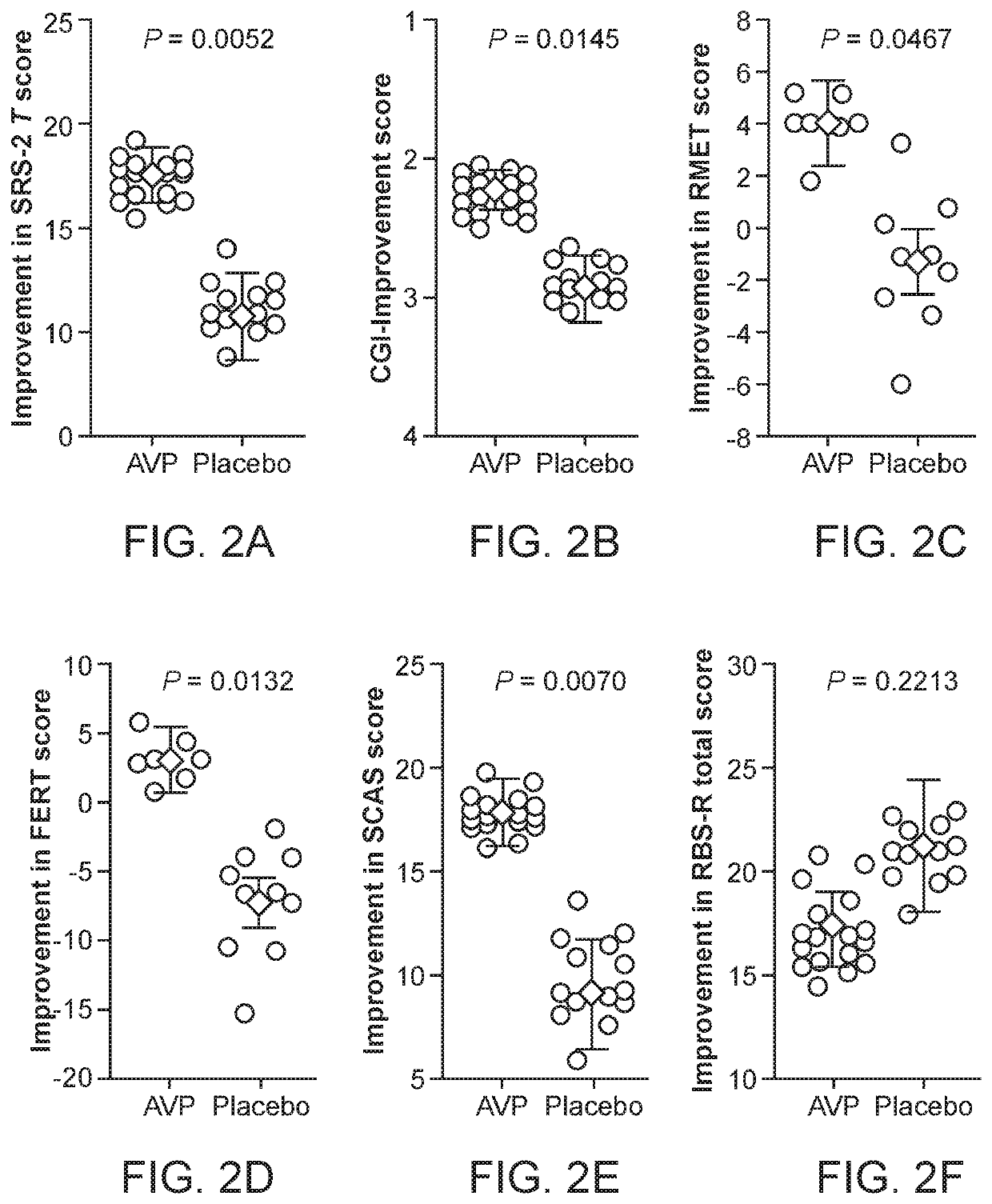Intranasal vasopressin treatment of social deficits in autism
a vasopressin and vasopressin technology, applied in the field of intranasal vasopressin treatment of social deficits in autism, can solve the problems of only targeting associated behaviors, negative side effects, and ineffective improvement of asd's core social features
- Summary
- Abstract
- Description
- Claims
- Application Information
AI Technical Summary
Benefits of technology
Problems solved by technology
Method used
Image
Examples
Embodiment Construction
[0040]The characteristic impairments (social and repetitive behaviors) of autism spectrum disorder (ASD) have major impact on quality of life, yet there are no approved medications that effectively treat these core features. Accumulating preclinical research suggests that arginine vasopressin (AVP), a neuropeptide involved in mammalian social functioning, may be a possible treatment for ASD. Using a double-blind, randomized, placebo-controlled, parallel design, the efficacy and tolerability of 4-week intranasal AVP treatment was tested in a sample of N=30 children with ASD aged 6-12 years. AVP compared to placebo treatment significantly enhanced social abilities in children with ASD as assessed by change from baseline in the trial's primary outcome measure, the Social Responsiveness Scale (a parent-report measure). AVP-related social improvements were likewise evident on clinician evaluated and child performance-based measures. When pre-treatment blood vasopressin levels were taken ...
PUM
| Property | Measurement | Unit |
|---|---|---|
| blood concentration | aaaaa | aaaaa |
| blood concentration | aaaaa | aaaaa |
| blood concentration | aaaaa | aaaaa |
Abstract
Description
Claims
Application Information
 Login to View More
Login to View More - R&D
- Intellectual Property
- Life Sciences
- Materials
- Tech Scout
- Unparalleled Data Quality
- Higher Quality Content
- 60% Fewer Hallucinations
Browse by: Latest US Patents, China's latest patents, Technical Efficacy Thesaurus, Application Domain, Technology Topic, Popular Technical Reports.
© 2025 PatSnap. All rights reserved.Legal|Privacy policy|Modern Slavery Act Transparency Statement|Sitemap|About US| Contact US: help@patsnap.com



